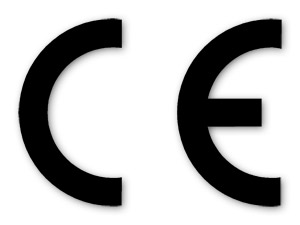 NOTE: This is an old article of 2012. The legislation has now changed. For an update goto: http://tratosgroup.com/quality/cpr/ NOTE: This is an old article of 2012. The legislation has now changed. For an update goto: http://tratosgroup.com/quality/cpr/
Maurizio Bragagni, Export Director of European cable manufacturer Tratos, explains what CE marking really means, why it is important and how to avoid cable that uses the CE logo illegally.
On a regular basis we get asked for CE certification on our cables. Not one of our cables is CE certified. In fact, no cable is CE certified. To go one step further, not a single product anywhere in the world in CE certified!
Surprised? Well you shouldn’t be as CE certification doesn’t exist. CE marking exists, but CE certification doesn’t.
Despite what you might think, I’m not being pedantic here. There is an important point to be made and one the European Commission has been actively addressing over recent months.
Although CE marking has been in place for over 15 years, many people in the electrical industry don’t understand what it stands for, either assuming it is a label indicating the product to which it applies has been made for the European market, or thinking it is a form of certification relating to the quality of the product. It is neither of these things.
The letters CE stand for "Conformité Européenne" which means "European Conformity". CE marking is a declaration by the manufacturer that the product meets all the appropriate provisions of the relevant legislation implementing certain European Directives. In the case of the electric cable industry, it is the Low Voltage Directive. This applies to all electrical equipment designed for use with a voltage rating up to 1000V AC or up to 1500V DC.
Before a cable manufacturer can sell its products in the EU, the manufacturer must have their product tested, and assemble a technical file detailing the standards, specifications and manufacturing controls they have applied. If the cable conforms to a European harmonised standard there is a presumption of conformity to the Directive. The technical file must be held within the EU, so this means that it should be supplied to each importer and held by them. If based within the EU, the manufacturer holds the technical file. The technical file must be held for a number of years after the product was last supplied.
In addition, the manufacturer must prepare an EC Declaration of Conformity in the prescribed format, and affix the CE mark to the product or packaging. Wholesalers and distributors have a duty to ensure that the cable product they supply satisfies safety requirements and that it bears the CE marking.
By affixing the CE marking on a product, a manufacturer is declaring conformity with all relevant legal requirements. They are confirming to regulatory authorities and end users that the product is compliant with the directive, making it eligible to be distributed and sold throughout the EU.
So, CE marking is not a form of certification in itself, but proof that the product complies with the relevant European Directive.
But then again, that’s not always case. It’s not always the case because a number of unreputable cable manufacturers and importers use CE marking illegally. Their cable does not conform to the Low Voltage Directive but they mark it with the CE logo regardless. British Approvals Service for Cables (BASEC), a non-profit making Government-nominated body that is a recognised sign of assurance of independent cable testing and approval, has seen many such CE counterfeiting across Europe: “Many organisations do not hold the required documentation. Some products may be CE marked but the manufacturer has not performed the required testing or safety assessment”.
Using such cable can be extremely dangerous as it may lead to any number of incidents, from life threatening electrocution to damaged equipment and failure of services.
So what can you do to ensure the cable you purchase genuinely conforms to the Low Voltage Directive and is suitable for use in Europe?
BASEC recommend you ask for the EC Declaration of Conformity for a start. For convenience many cable manufacturers hold these on their websites for download.
When buying pre-cut lengths of cable, such as larger armoured cables, any product supplied should be CE marked on delivery packaging or on the product; check both. As a further precaution, look for a recognisable or known manufacturer’s identification on a cable, so if there is a problem it will be possible to trace the cable back through the supply chain. Without a manufacturer’s stamp it is nearly impossible to trace the cable, therefore never accept cable with no markings. For peace of mind, you should also insist on an independent third-party approved cable such as BASEC or HAR marked. It is also important to specify on your order the relevant standard number the cable should conform to.
CE marking many not seem that interesting a subject and it’s something you may not have paid much attention to in the past, but its importance as a confirmation that the product meets the Low Voltage Directive and is suitable for use within Europe shouldn’t be underestimated. Just making a few simple checks that the cable you purchase has CE markings and, just as importantly, checking they are not counterfeit could literally save lives. |